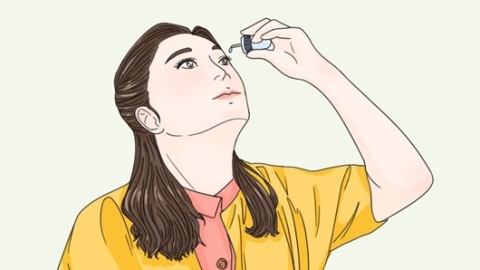What are the most effective eye drops for treating keratitis?
There is generally no single most effective eye drop suitable for all types of keratitis. Treatment of keratitis requires selecting appropriate eye drops based on the underlying cause. Commonly used options include levofloxacin eye drops, acyclovir eye drops, fluorometholone eye drops, natamycin eye drops, and sodium hyaluronate eye drops. Detailed explanations are as follows:

1. **Levofloxacin Eye Drops**: A quinolone antibiotic, effective against bacterial infections causing keratitis. It works by inhibiting bacterial DNA replication to eliminate pathogens. Typically administered 3–5 times daily, it should be used according to a prescribed course to prevent drug resistance.
2. **Acyclovir Eye Drops**: An antiviral medication used for keratitis caused by herpes simplex virus. It prevents viral replication and spread, helping relieve symptoms such as eye pain and photophobia. During the acute phase, it may be applied every 1–2 hours; frequency can be reduced once the condition stabilizes.
3. **Fluorometholone Eye Drops**: A corticosteroid used to reduce inflammation in non-infectious keratitis or after infectious inflammation has been controlled. It helps alleviate corneal edema and inflammatory responses. This medication must be used under medical supervision to avoid long-term misuse, which could lead to elevated intraocular pressure.
4. **Natamycin Eye Drops**: Used specifically for fungal keratitis, this medication has antifungal activity that inhibits fungal cell membrane synthesis. The solution should fully cover the corneal surface when administered, typically 4–6 times daily. Treatment duration must strictly follow medical advice.
5. **Sodium Hyaluronate Eye Drops**: Acting as an artificial tear, it lubricates the ocular surface and maintains corneal moisture. It is commonly used for dry eye symptoms associated with keratitis, aiding in corneal epithelial repair and relieving foreign body sensation. Usual dosage is 3–5 times daily, adjustable based on symptom severity.
The selection of eye drops must be based on accurate diagnosis of the type of keratitis—self-medication without professional guidance is not recommended. Hands should be cleaned before applying drops, and the bottle tip should not touch the eye to prevent contamination. If symptoms do not improve within three days of treatment, or if vision deteriorates or eye pain worsens, prompt medical attention is required to adjust the treatment plan.






